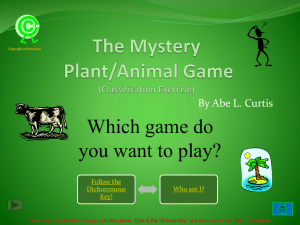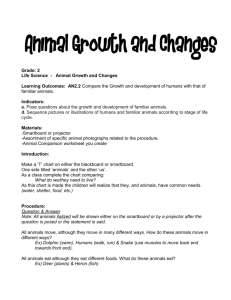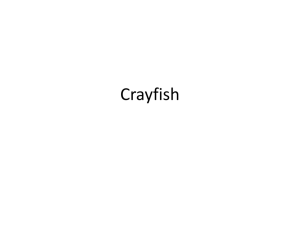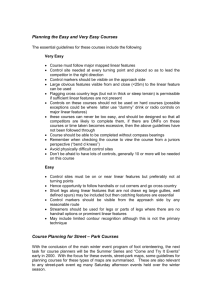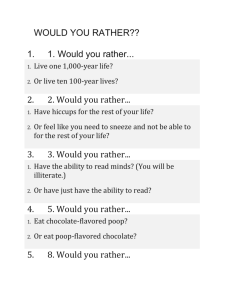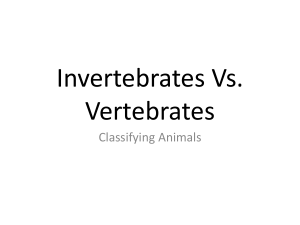Dead Living things are composed of cells and they will be
advertisement
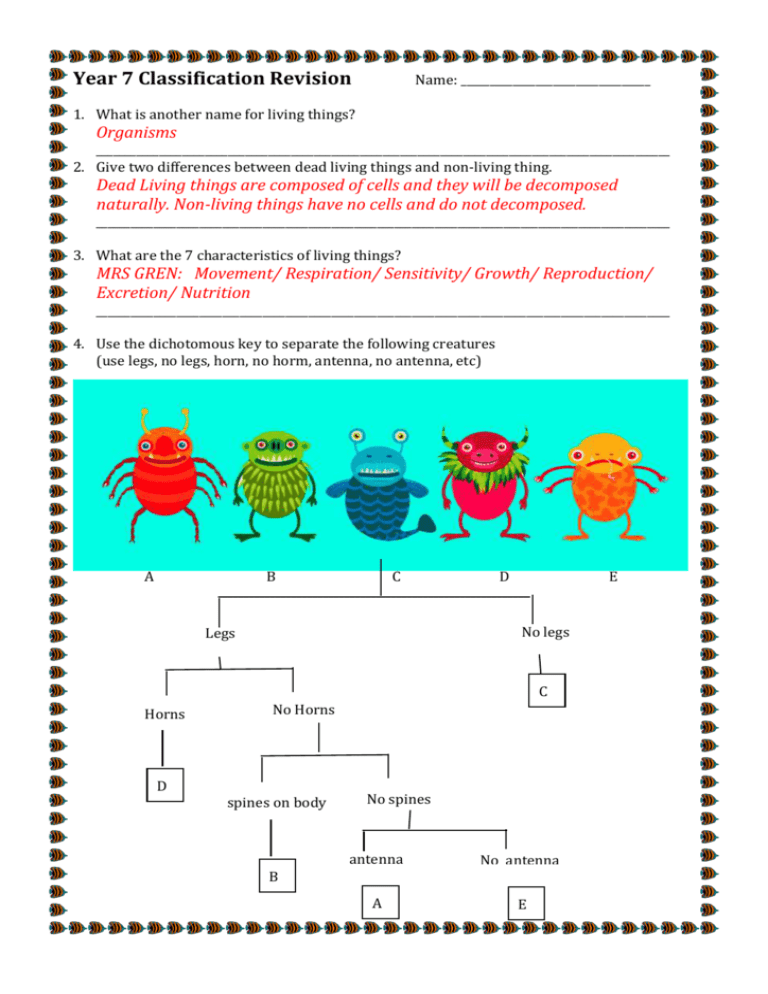
Year 7 Classification Revision Name: _________________________________ 1. What is another name for living things? Organisms ____________________________________________________________________________________________________ 2. Give two differences between dead living things and non-living thing. Dead Living things are composed of cells and they will be decomposed naturally. Non-living things have no cells and do not decomposed. ____________________________________________________________________________________________________ 3. What are the 7 characteristics of living things? MRS GREN: Movement/ Respiration/ Sensitivity/ Growth/ Reproduction/ Excretion/ Nutrition ____________________________________________________________________________________________________ 4. Use the dichotomous key to separate the following creatures (use legs, no legs, horn, no horm, antenna, no antenna, etc) A B C D E No legs Legs C Horns D No Horns spines on body No spines antenna No antenna A E B 5. Give the term used for the study of classification and naming organism. What do you call this expert. Taxonomy Taxonomists ____________________________________________________________________________________________________ 6. Plants and Fungi are very similar as they both multicellular and contain cell wall in their cells. What is the main difference between them. Plants have green pigment chlorophyll for photosynthesis but no chlorophyll in Fungi. ____________________________________________________________________________________________________ 7. Give 3 examples of Fungi. Mushroom, Mold and Yeast ___________________________________________________________________________________________________ 8. What is the main difference between a vertebrate and an invertebrate? A vertebrate is an animal with a backbone inside the body, but an invertebrate has no backbone; but may have an exoskeleton. ____________________________________________________________________________________________________ 9. Identify which is vertebrate (V) and which is invertebrate. (I) Cuttlefish I Eel V Shark V Pig V Whale V Octopus I Jellyfish I Starfish I Grasshopper I Sea horse V 10. Which 2 groups of vertebrates are known as “warm-blooded”? Which are “cold-blooded”? What do they actually mean? Warm-blooded = Bird and Mammals Cold-blooded = Fish, Amphibian and Reptile ____________________________________________________________________________________________________ 11. There are three types of mammals: monotremes, marsupials and placentals. What are their differences? Give an example for each type. Monotreme = a mammal that bear eggs, eg. Platypus Marsupial = a mammal that give birth to undeveloped baby that needs to grow further in mum’s pouch, eg. kangaroo Placental = a mammal that give birth to live birth eg. dog ___________________________________________________________________________________________________ 12. What are arthropods? Which are the 4 groups of arthropods? Invertebrates with jointed legs. Insects, Arachnids, Crustaceans and Myriapods ____________________________________________________________________________________________________ 13. Which of the followings are non-vascular plants? rose, moss, fern, liverwort, pine tree, grass Non-vascular plants = liverwort and moss ____________________________________________________________________________________________________ 14. Give two special characteristics of organisms (bacteria) in MONERA kingdom. Unicellular and no true nucleus __________________________________________________________________________________________________ 15. Complete the table showing the characteristics on plants Group Vascular tissues Bryophytes (Mosses) Ferns Conifers Angiosperms Spores for Cone reproduction Seed for Flower reproduction 16. Cnidarians are a group of primitive animals living in the sea. Give one characteristics of Cnidarians and 3 examples. They are invertebrates with soft bodies; having tentacles with stinging cells. ____________________________________________________________________________________________________ 17. Complete the following table showing the characteristics of some invertebrates Types of invertebrates: Crustacean, Echinoderm, Worm, Mollusc Organism Type of invertebrate Characteristics Sandworm Worm Tubular without legs Snail Mollusc Soft body with no legs Sea Urchin Echindoerm Spined skin with tube feet Yabby Crustacean 5 to 10 pairs of legs Dragonfly Insect 3 pair of legs and 3 body parts Millipede Myriapod More than 10 pairs of legs 18. List the group of vertebrates: fish, mammal, reptile, amphibian, bird a) Mammal = Having fur and feeding milk to their young b) Fish = Having fins for swimming and using gills for breathing c) Reptiles = Having rough, dry scaly skin and soft shelled eggs d) Bird = Having hard-shelled eggs and feather for flight e) Amphibian = Can live in water and on land with moist skin for breathing.

